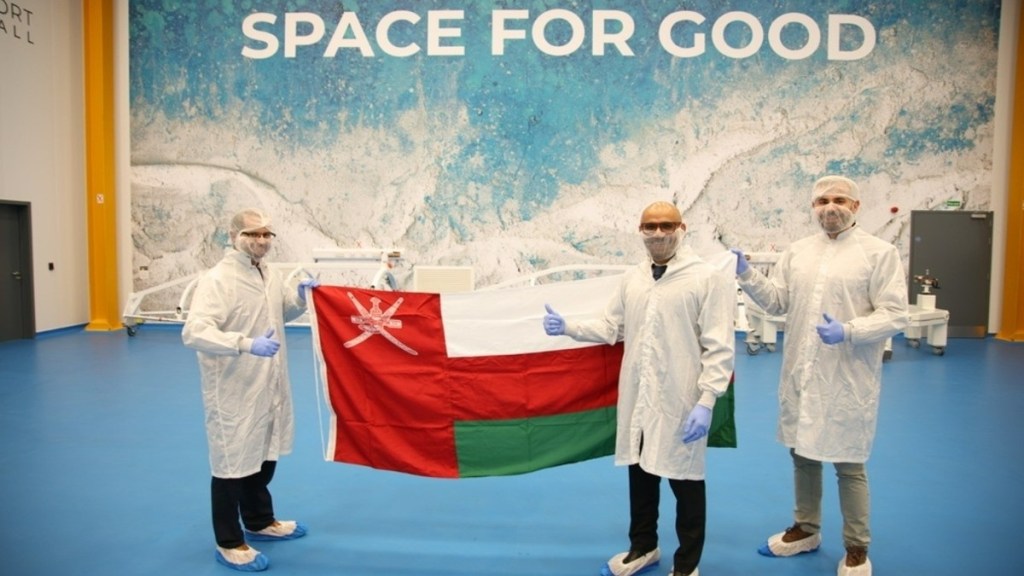Close on the heels of the United Arab Emirates robust space programme in the Gulf Region, the Sultanate of Oman will soon be home to a sophisticated Earth observation satellite centre.
Madrid based Indra, a global leader in transport and information technology solutions, recently announced that it is collaborating with Oman’s National Survey Authority (NSA) of the Ministry of Defence and Ministry of Finance to establish the nation’s first Earth observation satellite facility.
In its official statement the company has stated that the facility will be equipped with its proprietary software, which was developed to generate high-quality photos acquired by the Sentinel constellation of the European Copernicus programme. This programme is among the most technologically advanced that currently exists.
Financial Express Online has recently reported that as UAE works towards diversifying its economy, space has been identified as one area of growth. Among the Gulf countries it was the first to launch Mars Orbiter and now it is pursuing a “Beyond Mars’’ mission expected to be launched in 2028.
About the Satellite Centre in Oman
The satellite centre is an indispensable component in the achievement of a wide range of national strategic objectives. The Center’s analysis of satellite data will not only help with the management of land use and the design of metropolitan areas, but it will also help with the safety of maritime traffic, the preservation of the environment, and the efficient planning of important national infrastructure.
According to Indra, the ultimate objective is to make it easier for the Sultanate of Oman to enter the lucrative global Earth observation sector, which is growing as more commercial satellites are launched into space. This is the case since more satellites are being used for commercial purposes. This location will also function as a business centre, offering a wide range of commercial services to a variety of government, public, and private sector institutions that are interested in acquiring satellite images and data for the purposes of planning, decision-making, and growth strategies.
Satellites that observe the Earth are the most efficient tool for immediately gaining access to data that is both precise and up to date on a particular city, area, or the entire globe. Oman will commence on a trip into a future sector based on the intensive use of information and high technology with the implementation of this centre, which is a task that is needed to move toward a more sustainable world.
In addition, Indra is working on creating a constellation that will consist of over 200 very small satellites in order to provide services for worldwide air traffic management. Significantly, the Earth Observation Satellite Centre will work in conjunction with the ‘Aman’ project, which is now preparing to launch Oman’s first CubeSat satellite into a Low Earth Orbit from Newquay, Cornwall, in the United Kingdom.
Aman Satellite
A multinational effort involving Oman, the US and Poland resulted in the construction of the first Omani CubeSat, which was given the name Aman. The Omani technological pioneer ETCO, the American launch company Virgin Orbit, the Polish nanosatellite producer SatRev, and the cognitive technology solutions supplier TUATARA are all working together on this project.
The Aman mission is the very first Omani space mission, laying the groundwork for Oman’s whole space programme. As part of Oman’s National Space Program, it operates under the Ministry of Transport, Communications, and Information Technology, the project’s driving force.
Aman is a 3U CubeSat platform with sophisticated Earth-Observation capabilities. AMAN is equipped with a state-of-the-art Earth-Observation payload, Vision 300, an optical payload that has been tested in space and was created for use in nano- and microsatellite applications. Precision agriculture, forestry, and land use are just some of the applications that may be carried out with the VISION 300. Other applications include energy, infrastructure, and coastal monitoring. The VISION 300 was developed specifically to meet the demands of imaging at medium ground sampling distances.
In addition to the launch of the satellite itself, a five-year partnership between the relevant companies will comprise the design and production of a comprehensive CubeSat-based infrastructure for satellite imaging reception and transmission. The project will be carried out in phases that include the following elements: the design, manufacture, and development of software to enable ETCO to operate Oman’s first national CubeSat; the creation of a ground station by TUATARA and SatRevolution to provide connection, operations, and datalink with the launched CubeSat; and personnel training and know-how transfer, including NASA’s best practices, required to achieve all strategic objectives.
The Omani space project aims to deliver long-lasting advantages and open up new vistas for the next generation of global space explorers and innovators in the space sector while investing in homegrown talent to build a prosperous future for Oman. The project encourages and assists Oman’s businesses in accelerating their transformation towards a space-related economy.

